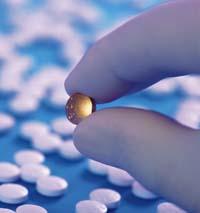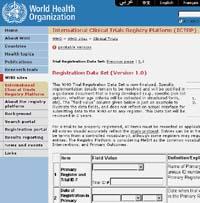Clinical trials of drugs under debate
2006/07/01 Orive Arroyo, Gorka - Farmazian doktorea. Biofarmazia, Farmakozinetika eta Farmazia-teknologiako irakasle kolaboratzaileaFarmazia Fakultatea UPV-EHU, Vitoria-Gasteiz Iturria: Elhuyar aldizkaria

Drug admission requirements are very specific. In addition to demonstrating efficacy, it is essential to ensure the safety of medicines. For this, in Spain a royal decree of 2004 regulates clinical trials of drugs. To control the functioning of the trials there are 135 ethical committees that analyze and approve each of the proposals for the valorization of drugs.
Moreover, the complete acceptance of a drug and therefore its expulsion require a series of studies. These investigations are also divided into several phases, including the preclinical phase, phase I. II. and III. and finally IV. phase 1 trials. Each phase has its objectives and each of them evaluates and analyzes certain variables. In this long journey, the drug must pass one phase to enter the next and III. is marketed only when phase a) results are safe and efficient.
As a pharmacist I can point out that in all phases we work very carefully. In the first phase, it is also essential to assume these responsibilities, since it is the first contact between the drug and the person. For example, a small group of healthy volunteers is taken, the drug is used in very small doses and it is necessary to inform patients of possible effects and risks. So where does the controversy surrounding clinical trials come from?
Publish data 'forget'
I think the first alarm is due to news published by scientific journals such as The Lancet, Science or Nature. In fact, according to these news, scientific articles produced by pharmaceutical companies behind clinical trials do not always describe all the results. With a little bit of irony we would say that they only take into account the positive data and that sometimes they are "forgotten" those who are not so positive. If we talk about politicians, we may not find this behavior so surprising, but we talk about the medicines we will take in the future.

Given this type of behavior, the work of scientific journals becomes very difficult. In fact, the papers analysing the journals are very good and often very well done. How to know if all the information is there or not? On the other hand, the withdrawal of a drug from the market due to problems arising from its marketing also has consequences in journals. These cases question the quality, professionalism and prestige of the journals.
There are many examples that confirm the behavior of “oblivion.” For example, antidepressant Paxil (paroxetine drug) has been widely used to treat depressions in young people. But in 2004 there were complaints against the drug and today we know that this drug can not be administered to young people, since it considerably increases the risk of suicide. However, the drug owner, GlaxoSmith Kline, has always defended (and continues to do so) that these are unfounded complaints, although just in case she paid 2.5 million dollars to victims to avoid problems.
Another known example is the drug Celebrex (drug Celecoxib). The developers of the drug published in the journal of the Association of American Physicians (JAMA) data of very good appearance, among which they highlight the low risk of ulceration of the drug. Months later, however, some scientists learned that the results published in the journal JAMA corresponded to data collected for 6 months and that, if the data of one year is taken into account, the risk of ulcers was similar to that of other drugs. That is, it was revealed that the authors of the paper shortened the duration of the trials in order to obtain better results.
These examples show the pressures to publish clinical trials to put in some way the positive results. But don't think that the results of all clinical trials will always be found in scientific journals. Only 40% of clinical trials started in 2002 since 1984 were published. And, as has been said, in many of them not all data appeared. In 2004, after 122 clinical trials analyzed, a Danish group showed that researchers published less than 50% of the total data measured during trials. Going into the background, it was also evident the tendency of the authors of the articles to dispense with the inconsistent data.

The results of another study published in 2003 are also significant. In this case, 370 clinical trials were analyzed; the conclusion was that the variable that most influenced the conclusions presented by the authors on the trials was the type of protector. That is, they found that trials funded by pharmaceutical companies were more likely to be positive.
There is again the shadow of money. A great shadow. Keep in mind that those responsible for clinical trials, in addition to being scientific, are also workers of these pharmaceutical impoverished. The company pays the salary and feels very pressured to have positive results in return. Pharmaceutical companies also pressure publishers saying that, after publication of the research, they will buy many copies or "reprints" of the article. These statements can have a great influence on the decisions of publishers, which are the main income of many journals.
In any case, these economic blackmail are very rare in prestigious journals, with a great scientific and economic differentiation. Moreover, some journals, such as The Lancet, require a full clinical trial protocol along with the scientific article. In this way, editors can compare the data and conclusions referred to in the article with the initial objectives and with all measured parameters.
Security in Uncertainty

In addition to controversies about scientific articles, a second factor is social concern about clinical trials: serious side effects in some trials. The first notable case is the drug Aricept (drug donazepyl). This drug was introduced in 2006 in the III. in phase 1, with the aim of evaluating the efficacy and safety against Alzheimer's vascular disease. Unfortunately 11 people died in the group taking the drug Aricept. In the control group, instead, nothing. The results remain comprehensive, but this difference between both groups is very significant and significant.
Another clinical trial without death but with serious consequences was conducted in London. In this case they were in phase I and the new drug TGN 1412 was tested with 8 volunteers. Of them 2 took placebo and 6 the new drug. After taking the drug, 6 volunteers responded violently: pain, breathing problems and inflammation. According to experts, the volunteers experienced a terrible anaphylactic reaction, since the drug had overactivated its immune response. The worst is not that, since with a simple anti-allergic test all those terrible consequences could be avoided.
Necessary measures

This type of event causes alarm and action is necessary. These serious problems that have occurred in recent times should be taken into account by clinical trial managers, study commissions and ethical commissions. In no case can it be accepted that those responsible for the trials do not describe all the results in the articles, and even less can the low level of safety presented by the trials of some drugs be accepted. Perhaps before testing with people, more studies with animals should be needed.
Moreover, clinical trial protocols and all variables measured should be public in order to establish appropriate comparisons with published data in the future. It is clear that the development and marketing of medicines is a circular business for pharmaceutical companies, but it is everyone's responsibility, in addition to insurance, to be legal and transparent.





